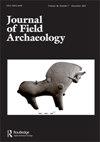Fortified Communities in the South Caucasus: Insights from Mtsvane Gora and Dmanisis Gora
IF 1.5
1区 历史学
0 ARCHAEOLOGY
引用次数: 1
Abstract
ABSTRACT Fortresses are defining features of the Late Bronze and Early Iron Age landscape in the South Caucasus, with hundreds of sites recorded in archaeological surveys in Georgia, Armenia and Azerbaijan, and northeastern Turkey. Yet, research on how these communities functioned is dominated by evidence from the small fraction of these sites that have been excavated, and regional variability remains underexplored. This paper discusses excavations at two such fortresses in the Lesser Caucasus borderlands and contextualizes them within global discussions about fortresses and their associated communities. Analysis of architecture, ceramics, and small finds identified evidence for a diverse range of activities within these compounds, including both craft production and ritual activity. While the size and construction of the two fortresses differ, the evidence for significant occupation at both suggests that these fortresses were durable communities, not temporary refugia. Further work is necessary, however, to assess whether these fortresses were highly ordered institutions centralized under elite rule or heterarchical communities joined by common interest.南高加索的强化社区:Mtsvane Gora和Dmanisis Gora的见解
摘要堡垒是南高加索青铜时代晚期和铁器时代早期景观的特征,在格鲁吉亚、亚美尼亚和阿塞拜疆以及土耳其东北部的考古调查中记录了数百处遗址。然而,对这些社区如何运作的研究主要是来自这些已发掘遗址中一小部分的证据,而区域变异性仍有待发掘。本文讨论了在小高加索边境地区的两座这样的堡垒的发掘,并将其置于关于堡垒及其相关社区的全球讨论中。对建筑、陶瓷和小发现的分析确定了这些化合物中各种活动的证据,包括工艺生产和仪式活动。虽然这两座堡垒的大小和建造方式不同,但有证据表明,这两座城堡都被大量占领,这表明这些堡垒是耐用的社区,而不是临时避难所。然而,还需要进一步的工作来评估这些堡垒是精英统治下的高度有序的机构,还是共同利益所结合的非政府社区。
本文章由计算机程序翻译,如有差异,请以英文原文为准。
求助全文
约1分钟内获得全文
求助全文
来源期刊

JOURNAL OF FIELD ARCHAEOLOGY
ARCHAEOLOGY-
CiteScore
4.60
自引率
5.30%
发文量
29
期刊介绍:
The Journal of Field Archaeology is an international, refereed journal serving the interests of archaeologists, anthropologists, historians, scientists, and others concerned with the recovery and interpretation of archaeological data. Its scope is worldwide and is not confined to any particular time period. Contributions in English are welcomed from all countries.
 求助内容:
求助内容: 应助结果提醒方式:
应助结果提醒方式:


